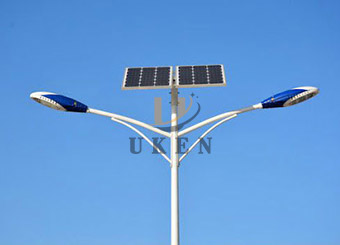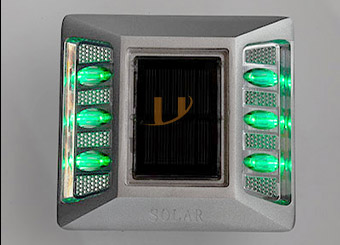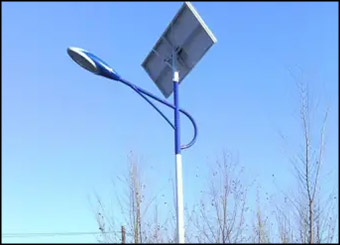With the continuous advancement of new energy technologies, solar street lights are being increasingly adopted worldwide. From bustling city streets to quiet rural paths, their presence is ubiquitous. Government support for green energy and ongoing technological breakthroughs are driving the rapid growth of the solar street light market, establishing it as a new trend in the lighting industry.
Solar street lights generate electricity using solar energy, eliminating the need for traditional power sources and thereby avoiding carbon emissions from the combustion of fossil fuels like coal and oil. According to calculations, a single solar street light can reduce carbon emissions by approximately 1.2 tonnes annually, and large-scale adoption can make a significant contribution to global emissions reduction targets.
Solar energy is an inexhaustible and renewable energy source. Using solar street lights effectively reduces reliance on non-renewable resources like coal and oil. Additionally, traditional street lights consume large amounts of water during the power generation process, whereas solar street lights have no such consumption, further conserving precious natural resources.
High-quality solar street lights utilise directional lighting technology to precisely project light onto the areas that require illumination, significantly reducing the scattering of light into the sky and unnecessary areas. This feature reduces the impact of light pollution on the ecological environment, such as interfering with bird migration and insect reproduction, while also benefiting human health and improving sleep quality.
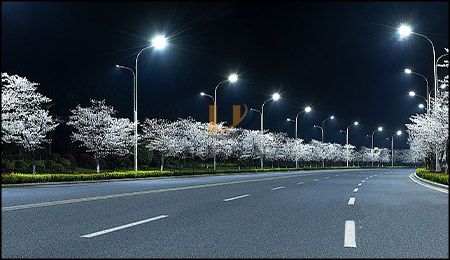
Solar street lights do not require the installation of complex cables, eliminating costs associated with cable procurement, road excavation, and cable laying. Especially in remote areas without power grids, there is no need to build additional transmission lines, resulting in installation costs that are 40%–60% lower than traditional street lights, a significant advantage.
Solar street lights do not incur electricity fees during operation, resulting in significant long-term cost savings. Additionally, their maintenance is relatively simple, with long-lasting components such as LED light sources that can last 50,000 to 100,000 hours, greatly reducing maintenance and replacement costs. Long-term operating costs are far lower than those of traditional street lights.
Although the initial investment for solar streetlights is relatively high, considering the long-term savings in electricity and maintenance costs, the investment payback period is short. Generally, the cost can be recovered within 3–5 years, and subsequent use is essentially cost-free, resulting in significant long-term economic benefits.
Solar street lights are not restricted by the power grid and can be installed anywhere with sunlight, whether on mountain tops, riverbanks, or remote rural areas. The installation process is simple and does not require professional electricians; ordinary construction workers can complete it after basic training, saving a significant amount of installation time.
Solar street lights use low-voltage power supply, typically operating at 12–24 volts, eliminating the safety hazards associated with high-voltage electricity. This makes them particularly suitable for densely populated areas and locations near schools, residential communities, and other areas where children gather. Some solar street lights also feature lightning protection and waterproofing capabilities, ensuring stable operation even during thunderstorms, heavy rain, and other adverse weather conditions.
Solar street lights are typically equipped with intelligent control systems such as light sensors, timers, or motion detectors. Light sensor functionality automatically turns the lights on and off based on ambient light levels; timer functionality allows for specific on/off times to be set; and motion detector functionality automatically increases brightness when people or vehicles are detected and reduces brightness when no movement is detected. These intelligent control features enhance energy efficiency and promote environmental sustainability.
Solar street lights provide stable lighting, effectively improving night-time road visibility. Drivers can more clearly identify road conditions, traffic markings, and pedestrians at night, enabling them to react in advance and reduce the occurrence of traffic accidents. For example, after installing solar street lights on rural roads and around residential areas, the incidence of night-time accidents has significantly decreased, making residents feel safer when travelling.
Solar street lights illuminate public spaces such as parks, squares, and communities, allowing residents to engage in activities like walking, exercising, and entertainment at night, extending outdoor activity time and enriching leisure life. Additionally, solar street lights come in diverse designs and are aesthetically pleasing, blending seamlessly with the surrounding environment and enhancing the overall aesthetic appeal of the area.
In remote off-grid areas, the installation of solar streetlights has improved local infrastructure. Roads are no longer pitch-black at night, making it more convenient for residents to travel and live. It also facilitates nighttime teaching at schools and emergency medical care at hospitals, effectively promoting the development of local education, healthcare, and other industries.
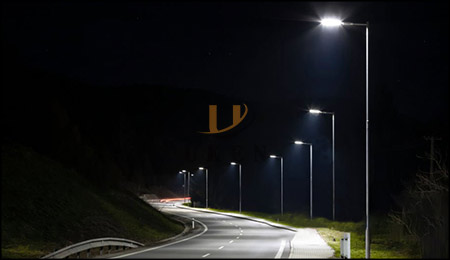
Using solar street lights on urban roads can effectively alleviate electricity pressure and reduce the load on the urban power grid. At the same time, they can serve as basic lighting infrastructure for smart city construction, working in conjunction with other smart devices to support the intelligent management of cities.
For rural and remote areas, solar street lights have solved long-standing lighting challenges. They do not rely on the power grid, have low installation costs, and have enabled residents in these areas to bid farewell to the history of ‘traveling in the dark,’ improving their quality of life and injecting new vitality into rural revitalisation.
Using solar street lights in scenic areas and parks can meet nighttime lighting needs without damaging natural landscapes, aligning with ecological and environmental protection principles. Their aesthetically pleasing designs can also harmonise with the environment of scenic areas and parks, enhancing the overall landscape effect.
The benefits of using solar street lights are numerous. In terms of environmental protection and sustainable development, they reduce carbon emissions, conserve natural resources, and minimise light pollution. In terms of economic costs, they lower initial installation costs, reduce long-term operational expenses, and offer a reasonable return on investment. In terms of installation and use, they offer the advantages of convenient and flexible installation, safe and reliable operation, and intelligent control for greater efficiency. They also enhance road safety and living standards, and offer unique benefits in various application scenarios.
Whether you are a government department, a business, or a community, consider adopting solar street lights. If you would like to learn more about solar street light products or solutions, please visit our official website or call our consultation hotline. Let us work together to contribute to environmental protection, energy conservation, and emissions reduction.

